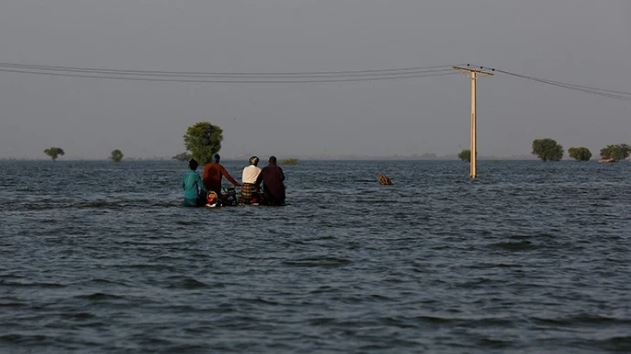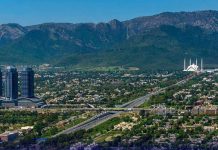SEHWAN: Parts of Pakistan seemed “like a sea”, Prime Minister Shehbaz Sharif said on Wednesday, after visiting some of the flood-hit areas that cover as much as a third of the South Asian nation, where 18 more deaths took the toll from days of rain to 1,343.
As many as 33 million of a population of 220 million have been affected in a disaster blamed on climate change that has left hundreds of thousands homeless and caused losses of at least $10 billion, officials estimate.
“You wouldn’t believe the scale of destruction there,” PM Shehbaz told media after a visit to the southern province of Sindh. “It is water everywhere as far as you could see. It is just like a sea.”
The government, which has boosted cash handouts for flood victims to 70 billion Pakistani rupees ($313.90 million), will buy 200,000 tents to house displaced families, he added.
Receding waters threaten a new challenge in the form of water-borne infectious diseases, PM Shehbaz said.
“We will need trillions of rupees to cope with this calamity.”
The United Nations has called for $160 million in aid to help the flood victims.
Many of those affected are from Sindh, where Pakistan’s largest freshwater lake is dangerously close to bursting its banks, even after having been breached in an operation that displaced 100,000 people.
National disaster officials said eight children were among the dead in the last 24 hours. The floods were brought by record monsoon rains and glacier melt in Pakistan’s northern mountains.
With more rain expected in the coming month, the situation could worsen further, a top official of the United Nations refugee agency (UNHCR) has warned.
Already, the World Health Organization has said more than 6.4 million people need humanitarian support in the flooded areas.
The raging waters have swept away 1.6 million houses, 5,735 km (3,564 miles) of transport links, 750,000 head of livestock, and swamped more than 2 million acres (809,370 hectares) of farmland.
Pakistan has received nearly 190% more rain than the 30-year average in July and August, totalling 391 mm (15.4 inches), with Sindh getting 466% more rain than the average.

















